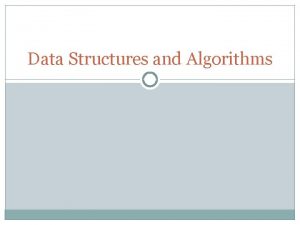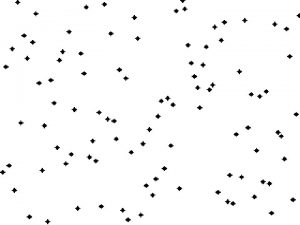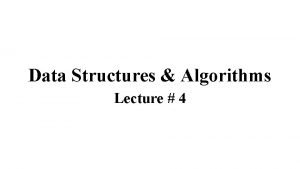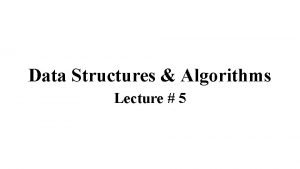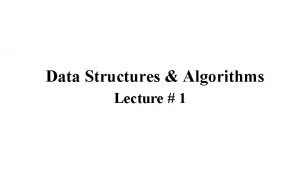Data Structures and Algorithms Computational Structures and Methods








- Slides: 8

Data Structures and Algorithms Computational Structures and Methods in a 21 st Century Context Computer Science and Engineering 373 University of Washington CSE 373, S. Tanimoto Introduction - 1

Objectives Content: Learn specific techniques of data structures and algorithms. Skills and Habits: Practice using computers and the Internet as tools, develop communication skills, work individually and work in groups. CSE 373, S. Tanimoto Introduction - 2

Vehicles • Web-based research. • Creating Java applets that become tools for understanding techniques and communicating about them. • Written and oral presentation. • Creating mathematical descriptions of data structures, algorithms, and behavior. CSE 373, S. Tanimoto Introduction - 3

Textbook Sartaj Sahni: Data Structures, Algorithms, and Applications in Java. Mc. Graw-Hill. This is a strong text, sold at a relatively low price. Dr. Sahni has authored or co-authored a number of successful texts, including Horowitz & Sahni: Fundamentals of Data Structures (Computer Science Press, 1976). Note: The text has a “review” of Java, but does not cover Java’s graphics and applet features. Therefore, we’ll often rely on additional references and tutorials. CSE 373, S. Tanimoto Introduction - 4

Computing Skills We’ll Learn/Use • Writing HTML • Programming in Java, including creating Applets • Basic Unix skills for posting files on the web server CSE 373, S. Tanimoto Introduction - 5

Why Java? Best language for creating and sharing visual computing tools on the web. Close enough to C++ to be easily learned after CSE 143. Great support by textbooks, tutorials, and a wealth of online examples. Compilers and run-time environments are available without charge from Sun Microsystems, Inc. CSE 373, S. Tanimoto Introduction - 6

Communication Tools/Activities • Using search engines on the web to obtain technical information. • Creating reports as web pages. • Creating self-explanatory demos with Applets. • Using a custom web-based textual communication tool: INFACT-FORUM. • Oral presentations. • Peer reviews. CSE 373, S. Tanimoto Introduction - 7

First Assignment • Do research using search engines on the web. • Work individually • Each student answers a different question • Report results in a web page. • Learn or brush up on HTML, Unix skills, and get ready to post Java applets in future assignments. • Learn about an interesting data structure or algorithm and share this knowledge with the class via the web. • Demonstrate clear writing and clear thinking. • (See the assignment web page itself for details. ) CSE 373, S. Tanimoto Introduction - 8









